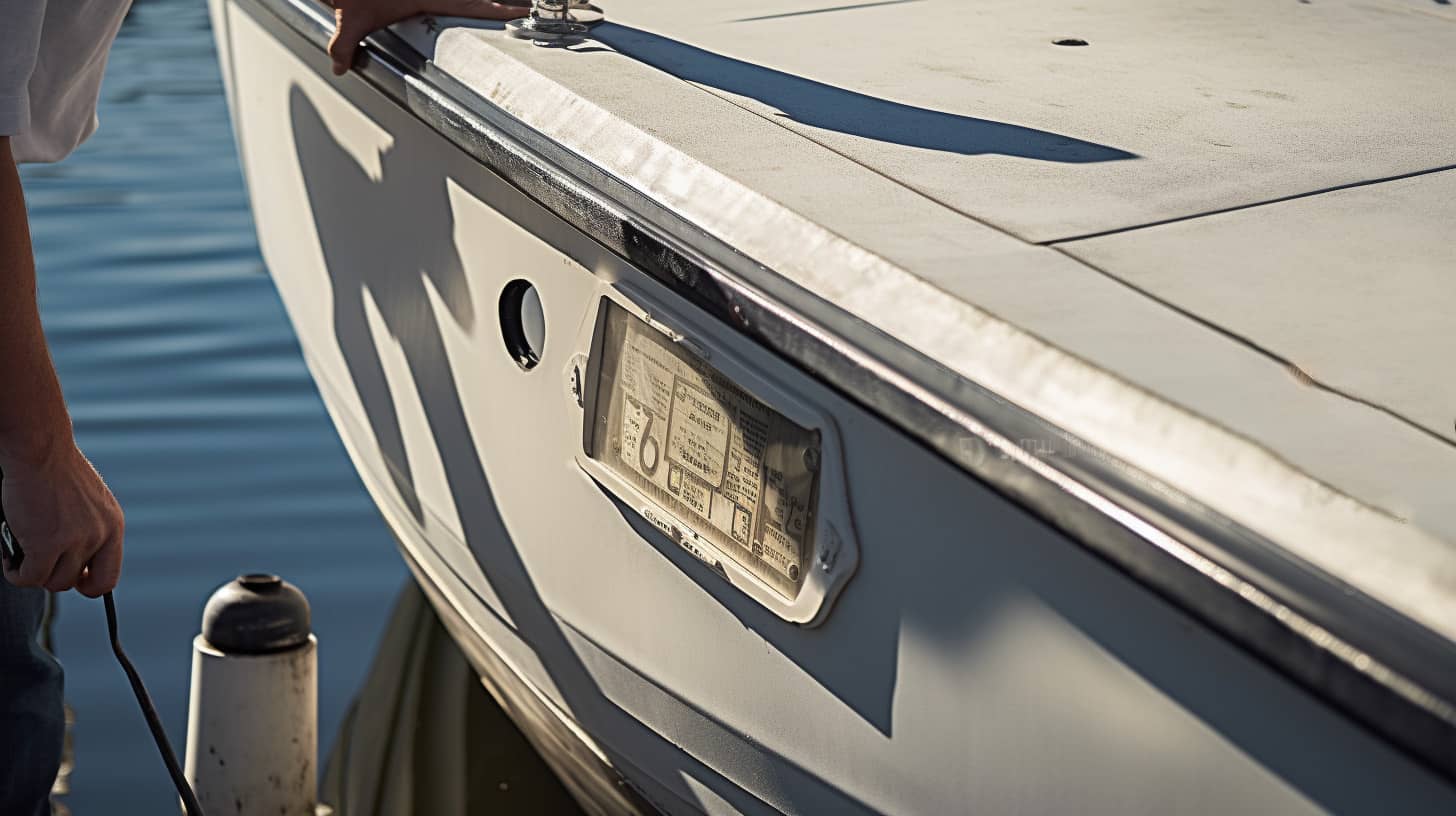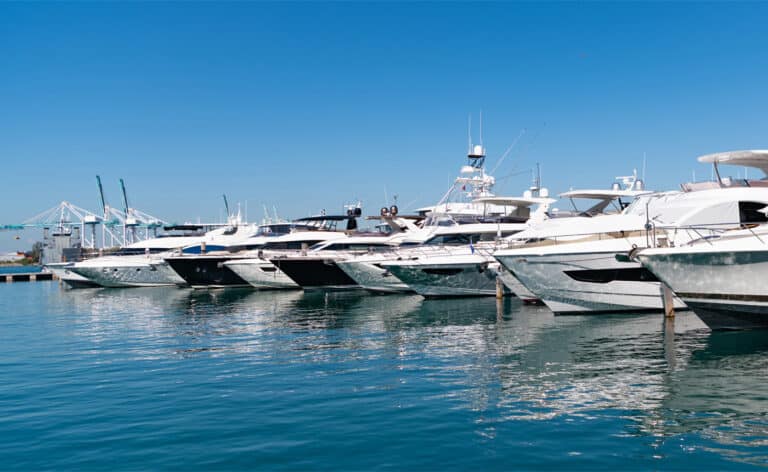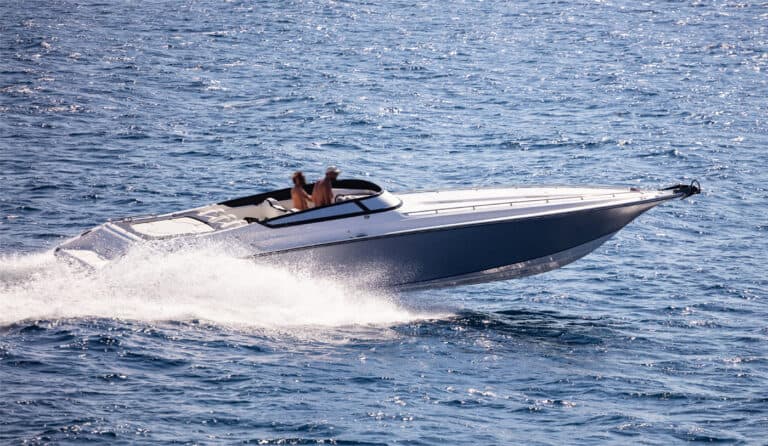Boat owners must know the crucial details of their vessel as compliance with federal law is paramount in ensuring that the boat is used safely.
A capacity plate is either positioned near the operator or on the transom of the vessel and must be displayed on boats that measure less than 20ft in length.
The capacity plate will list three important factors; the maximum person capacity of the boat, the maximum carrying weight (gross load), and the maximum horsepower.
Understanding these elements serves significant importance as it is a legal requirement for a capacity plate that records all of these details to be displayed on a boat as it operates.
If the capacity of the boat is exceeded, the chance of it capsizing increases.
It will also make the boat much more difficult to control once it is fully loaded.
In severe cases, this imbalance can result in fatalities of those who have fallen overboard.
Owners of smaller boats should pay close attention when loading their boats to ensure that such eventualities are avoided.
The maximum weight that is stated on the capacity plate refers to the passengers, the gear, and the motor and it should not be surpassed.
Calculating Capacity Plate Requirements
Some boats do not come with capacity plates. I.e homemade models or those that were constructed before this regulation was introduced.
Typically, boat manufacturers will put their vessel through testing to assess the capacity that it can hold safely. This is then displayed on the capacity plate.
However, as mentioned, some vessels do not have this feature.
For this reason, there are formulas that can be used to determine your vessel’s capacity.
To calculate the number of people that can safely be loaded onto the boat you will need to conduct the following: Vessel length (ft) X Vessel width (ft) /15.
The value at which you arrive will then provide you with the answer.
Fractions should be rounded to the nearest lower number.
To calculate the horsepower of the boat, you will need to carry out the following calculation: Boat length (ft) X Transom Width (ft).
This applies to small boats with a flat bottom.
This figure will then be used to determine the horsepower.
If the figure was 35 or less, the horsepower of the vessel is 3, if it was between 36 to 39 the HP is 5, 40 – 42 equates to an HP of 7.5, a figure between 43 to 45 means that the HP is 10 and finally, if the figure was is in between 46 to 52, the boat has a maximum HP of 15.
If you have a flat bottomed, hard chined boat, you should reduce an increment if you have a figure that is 52 or below.
Getting A New Capacity Plate For Your Boat
If there doesn’t appear to be a capacity plate on the section of the boat where it should be, you should contact the manufacturer.
In most cases, they will be able to advise you on where the plate should be affixed on your specific model and they can also provide you with a new plate.
There are also several other retailers that market replacement capacity plates so you will not be restricted when trying to find the correct one for your specific model.
Loading Your Boat Safely
As previously touched upon, it is important to be cautious when loading passengers onto your boat.
Below, we have provided you with some safety tips which will help to ensure that everyone inside the boat remains safe.
First, the weight inside the boat must be evenly distributed.
If one side of the boat is overloaded, it is more likely to gather water.
There is also an increased likeliness of the boat plowing through the water if there is too much weight in the bow.
Furthermore, the stern should not be overloaded.
The maximum capacity of people that can board your boat is a guide that shouldn’t be exceeded.
This is because, when the manufacturers calculate the maximum capacity of people they base this sum on the assumption that the passenger’s weight is similar, rather than accounting for different weights.
For this reason, you shouldn’t go over this limit even if the passengers that are going to be boarding the boat weigh less.
Even if the weight is below the guideline, it should be evenly distributed as this will eliminate any risks of accidents occurring.
You will need to make adjustments to the load of your boat in different conditions.
For example in poor and rough weather, you are more likely to encounter higher waves that will affect how easy the boat is to control.
As a result, you should carry fewer passengers as more hazards could result in possible accidents if there are too many people on the boat.
This is also the case if the boat is going to be traveling through congested areas where you will closely be passing other boats.
Finally, you must ensure that the engine of your boat is compatible with the maximum horsepower.
If the engine overpowers the boat and exceeds the recommended limit you will also run into difficulties because the boat will become much more challenging to try and control.
Under Federal Law, Which Type Of Boat Must Have A Capacity Plate?
Displaying a capacity plate is not only a legal requirement but something that helps boat owners to ensure that their vessel is used correctly and all passengers inside the boat are safe.
It is very important to pay close attention to the number of passengers that you are allowing onto your boat.
You must display the plate in the correct section of the boat to ensure that it is visible.
As mentioned, failing to abide by the guidelines of the vessel’s capacity plate can result in many dangers and in the worst-case scenario possible fatalities if the boat becomes hard to control.
Different conditions will require you to make adjustments to the boat’s capacity accordingly.
Boat Capacity Plates FAQs
What Is A Boat Capacity Plate?
The boat capacity plate indicates the amount of gear you are required to carry on your boat.
The plate is usually placed close to the operator’s position.
It shows the weight capacity or the maximum number of persons the vessel can carry.
All the boats, with the exception of a few boats, are mandated to have the capacity plate attached.
Under Federal Law, Which Type Of Boat Must Have A Capacity Plate?
Under federal law, any boat less than 20 feet is required to have a capacity plate.
The capacity recommended on the plate is meant for the vessel when operating in favourable weather conditions.
Personal watercraft and sailboats are not required to have the capacity plate attached to them.
Without the capacity plate, you may carry over the required weight and end up in trouble with the law or risk an accident in the waters.
What Happens If Your Boat Doesn’t Have A Capacity Plate?
You may get in trouble with the law. Aside from legal repercussions, carrying more people or things than required can cause your boat to capsize or swamp.
Lacking a plate may void your insurance policy. Ensure you have one and always carry the suitable capacity before sailing.
When your boat does not have a capacity plate, you are likely to exceed the recommended capacity.
That may be dangerous, especially in rough waters and unfavourable conditions.
How Do I Get Capacity Plate For My Boat?
When you have a boat without the capacity plate, you can calculate it yourself. You take the boat’s length (feet), multiply by the width (feet) and divide by fifteen.
That will be the maximum persons you can carry. The capacity you carry should also reflect the fuel tank and any other additional cargo.
You can also consult the manufacturers if you have their information.
They may provide you with a capacity plate for your vessel.
Is It Illegal To Exceed Boat Capacity?
It is illegal in some states to exceed your boat’s capacity.
You can get away with carrying more people than required in other states.
You may never pass through a weigh-in station for validating the legality of the weight you carry.
But if found, you may face legal consequences.
Whether or not it’s illegal to exceed boat capacity in your state, it’s not a wise choice to carry overweight.
Best Location on a Boat for Capacity Plate? Summary
The transom or the operator’s position is the best location for the capacity plate.
It has to be placed in sight of the boat’s helm, where the operator can easily see.
It is placed there because it provides a crucial piece of information.
It has to be visible to the operator and law enforcement officers if they need to see it.
All the boats will come with the capacity plate placed at the same locations, despite the different brands.




